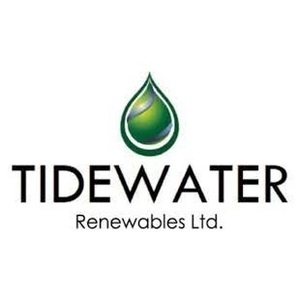Tidewater: Renewable diesel complex operating at near capacity, work continues on proposed SAF project

March 14, 2024
BY Erin Voegele
Tidewater Renewables Ltd. on March 14 announced that its 3,000-barrel-per-day renewable diesel facility in Prince George, British Columbia, is currently operating at near nameplate capacity. Work is also progressing on proposed plans to produce sustainable aviation fuel (SAF).
Tidewater CEO Jeremy Bains discussed both the plant’s current operations and plans for future SAF production during a fourth quarter earnings call, held March 14.
Advertisement
Advertisement
The company commenced commercial operations at its renewable diesel and renewable hydrogen (HDRD) complex during the final quarter of last year. The facility reached its design capacity in early December before encountering some initial operating challenges. The most significant of these challenges was related to compressor failures, which the company said it has since resolved.
According to Tidewater, the HDRD complex returned to designed production capacity in late February. Bains confirmed that the plant has been operating at designed capacity for nearly a month.
Advertisement
Advertisement
Production during the fourth quarter averaged 1,700 barrels per day, equating to approximately 57% nameplate capacity. Utilization is expected to be approximately 65% for the first quarter of 2024. For the full year, Tidewater Chief Financial Officer Ray Kwan said production is expected to average 2,400 to 2,600 barrels per day, equating to 80-87% capacity utilization.
Although Tidewater’s HDRD facility only recently began commercial operations, the company is already pursuing the development of a new 6,500 barrel per day renewable diesel and SAF project. Bains said work on front end engineering design (FEED) is progressing this year. FEED and regulatory applications are expected to be complete in 2025. Bains also said significant work is underway on the commercial aspects of the proposed project, noting there is initial strong interest in offtake arrangements with major airlines.
Tidewater reported adjusted EBITDA of $10.7 million for the fourth quarter of 2023 and a net loss attributable to shareholders of $12.7 million, inclusive of a $19.6 million loss of derivative contracts.
Related Stories
President Trump on July 4 signed the “One Big Beautiful Bill Act.” The legislation extends and updates the 45Z credit and revives a tax credit benefiting small biodiesel producers but repeals several other bioenergy-related tax incentives.
SAF Magazine and the Commercial Aviation Alternative Fuels Initiative announced the preliminary agenda for the North American SAF Conference and Expo, being held Sept. 22-24 at the Minneapolis Convention Center in Minneapolis, Minnesota.
Saipem has been awarded an EPC contract by Enilive for the expansion of the company’s biorefinery in Porto Marghera, near Venice. The project will boost total nameplate capacity and enable the production of SAF.
Global digital shipbuilder Incat Crowther announced on June 11 the company has been commissioned by Los Angeles operator Catalina Express to design a new low-emission, renewable diesel-powered passenger ferry.
International Air Transport Association has announced the release of the Sustainable Aviation Fuel (SAF) Matchmaker platform, to facilitate SAF procurement between airlines and SAF producers by matching requests for SAF supply with offers.
Upcoming Events










